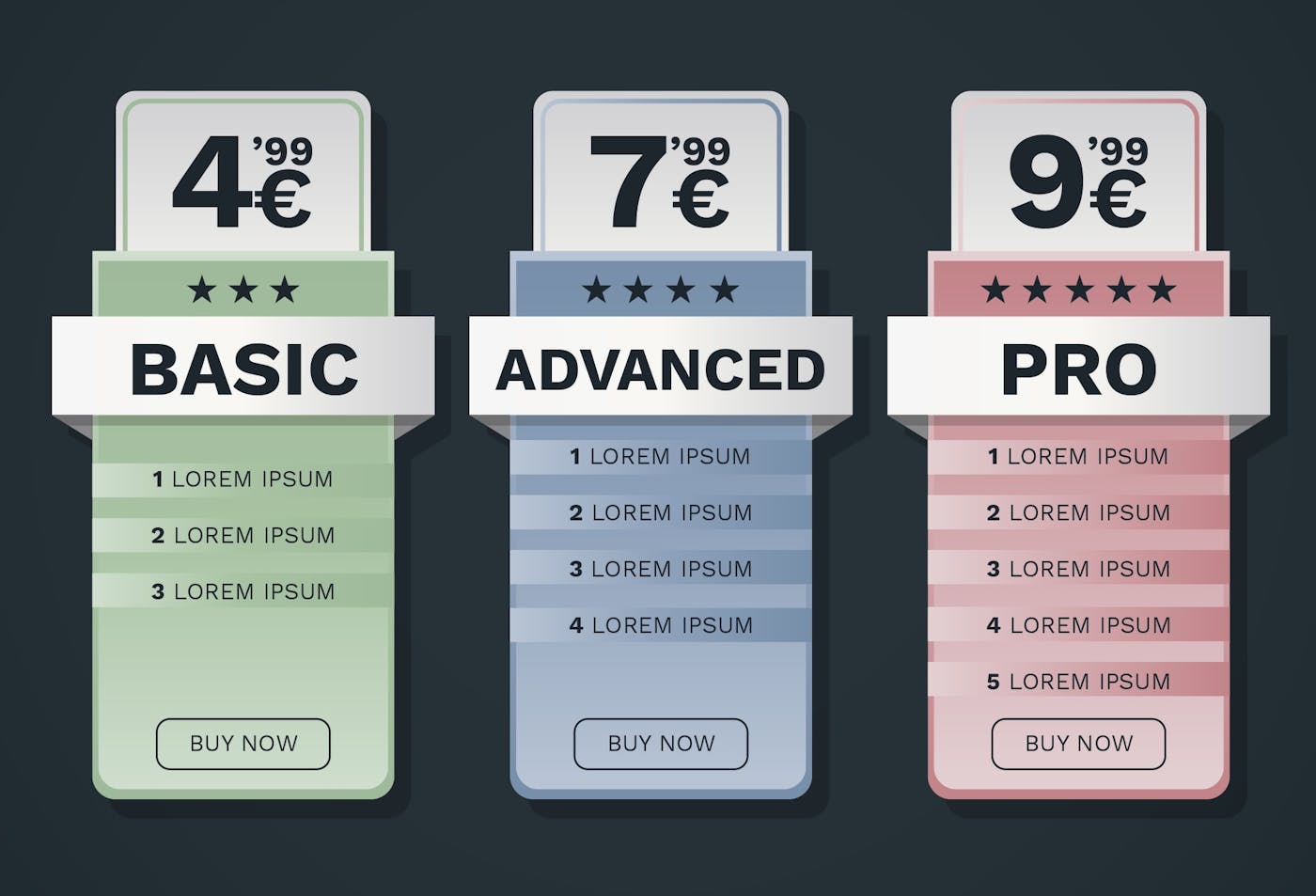How to build a simple and tailored pricing offer for your third place?

In a third-place, a clear and tailored pricing offer is essential to meet the diverse needs of your users while optimizing administrative management. How can you build a simple and effective pricing structure without losing flexibility? Here is a practical guide, enriched with advice and adapted to the realities of third places, fab labs, and makerspaces.
Why a simple pricing offer is essential?
Offering a clear and simple pricing structure is more than just a matter of convenience. It is a strategic tool that directly impacts user experience, the perception of your third place, and even your finances. Here are three key reasons why simplifying your pricing grid is indispensable.
1. Enhancing user experience
A complex pricing system can quickly discourage potential members. Too many options or unclear prices create confusion. According to a study by Sheena Iyengar, a professor at Columbia Business School, reducing the number of available choices significantly improves decision-making and increases conversions. By opting for a simple pricing structure, you make the user journey smoother, making registration and service usage more intuitive. The result? Satisfied users who are more likely to return.
2. Optimizing administrative management
Managing different prices for various user groups can become a logistical challenge for your administrative team. An overly detailed offer multiplies control points, adjustments, and the risk of errors. On the other hand, a streamlined pricing structure reduces the time spent answering user inquiries and minimizes mistakes.
Additionally, management software like Fab-Manager allows you to automate subscriptions and payments. With simple settings, you can configure different pricing levels for clearly defined user groups while maintaining clarity for your members. This simplification also ensures consistency between your communication and internal processes.
3. Building trust and simplifying decision-making
A simple pricing structure is not just practical—it is also a powerful way to build trust in your third place. A study by the Behavioral Economics Group shows that consumers tend to avoid complex choices, even when they offer better benefits. By displaying clear and transparent pricing, you demonstrate your commitment to accessibility and fairness, which are core values for your community.
Moreover, a straightforward pricing model reduces users' cognitive load, making it easier for them to take action. A well-designed price chart or a clear explanation on your website becomes a powerful tool to convert curious visitors into regular participants.

Freepik image
How to build a simple and tailored pricing offer?
Designing a clear pricing structure while meeting the expectations of different user groups may seem complex, but with the right approach, it becomes achievable. Here are some key steps to create a balanced, inclusive, and well-adapted pricing model.
1. Understand your audience through personas
Before setting your prices, it’s essential to understand the needs and expectations of your users. Creating personas—fictional yet realistic representations of your target audiences—helps you better identify and segment your users.
For example, imagine Alice, a curious student who primarily uses the FabLab for creative projects, and Paul, an entrepreneur renting a coworking space to grow his business. Their expectations, financial means, and service usage differ, and your pricing should reflect these distinctions.
By designing offers tailored to these profiles, you ensure greater user satisfaction and a more relevant pricing structure.
2. Offer specific pricing options for different user groups
Not all third-place users have the same needs, and a single pricing model may not be suitable for everyone. It can be useful to create specific offers for each type of user, such as:
- Coworkers often look for monthly subscriptions or flexible access to shared workspaces.
- Makers or FabLab users might benefit from hourly rates, day passes, or prepaid hour packs for machine access.
A great example is Copeaux Numériques, a third place that offers separate subscriptions for its coworking space and FabLab. This distinction makes the offer clearer and better suited to each community’s needs.
3. Limit the number of pricing categories
Simplicity is key to an effective pricing strategy. Too many categories can confuse users and create friction. Try to limit your pricing structure to four or five main categories, such as:
- Standard rate
- Reduced rate (for students, job seekers, etc.)
- Membership plans for specific user groups (e.g., makers or coworkers)
This approach keeps your pricing model clear while accommodating a broad audience.
4. Integrate marketing strategies into your pricing
To make your pricing offer even more appealing, consider these marketing techniques:
- Psychological pricing: Set prices just below psychological thresholds, like €29 instead of €30.
- Attractive bundles: Offer combined packages, such as an annual subscription that includes a free workshop or a discovery pack.
- Clear communication: Present your pricing with engaging visuals, such as simplified tables or infographics.
5. Test and adjust your pricing
A pricing structure should never be set in stone. Gathering user feedback is essential to fine-tune your pricing based on their needs. Surveys or informal discussions can reveal misunderstandings or necessary adjustments. You can also test your pricing by introducing temporary promotions to measure their impact and refine your strategy accordingly.
How does Fab-Manager simplify pricing management?
1. Easily configure user groups
With Fab-Manager, managing user groups is simple and efficient. You can create and customize specific groups—such as families, students, or professionals—by assigning them appropriate rights and pricing. Additionally, Fab-Manager allows you to differentiate between parents and children by activating the Family module. This feature enables dedicated pricing for children, making activities more accessible to younger users.
2. Automate payment and subscription management
Fab-Manager provides full automation for subscription and online payment management, simplifying administrative processes:
- Online payments: Payment collection is fully automated, reducing manual tasks.
- Simplified invoicing: Invoices are automatically generated and sent.
Moreover, Fab-Manager supports monthly installment payments for subscriptions, offering flexibility to members without adding complexity, as everything is handled automatically.
3. Use data to refine your pricing strategy
With its integrated statistics module, Fab-Manager provides valuable insights to help you analyze and optimize your pricing strategies:
- Number of subscriptions sold over time.
- Distribution of users across different pricing groups.
- Attendance trends to identify peak and low-traffic periods.
These insights allow you to better understand your community and adjust your offers to effectively meet their needs.
A simple and well-adapted pricing offer is a real asset for third places and FabLabs. It enhances user experience, simplifies administrative management, and boosts attractiveness. With management software like Fab-Manager, you can easily create, manage, and adjust your offers to meet your audience’s needs. Simplify your pricing, and let your users fully enjoy everything your third place has to offer!
FAQ
- How many user groups can I create in Fab-Manager?
You can create as many user groups as needed. However, for a clearer and more user-friendly offer, we recommend limiting the number of groups to 3 to 5 categories (e.g., general public, students, associations, startups).
- Does Fab-Manager allow the management of discounts and promotions?
Yes, you can configure specific discounts and promotional offers for each user group. This enables you to offer special rates for students, limited-time discounts, or reduced-price subscriptions for certain periods.
- How can I analyze the effectiveness of my pricing offer?
Fab-Manager's statistics module provides key insights into your subscriptions and pricing:
- Number of active subscriptions and their distribution by category.
- Attendance trends, including peak and low-traffic periods.
- Impact of discounts and promotions on registrations and revenue.
With these data points, you can fine-tune your pricing strategy to better meet your community’s needs.
Simplify your day-to-day management
Let us host Fab Manager for you, choose the Cloud offer that suits you.
Start in the cloud